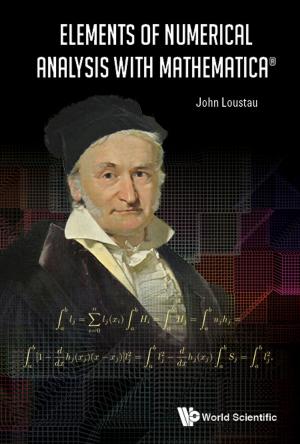Einstein's Apple
Homogeneous Einstein Fields
Nonfiction, Science & Nature, Science, Physics, Gravity, Mathematical Physics| Author: | Engelbert L Schucking, Eugene J Surowitz | ISBN: | 9789814630092 |
| Publisher: | World Scientific Publishing Company | Publication: | January 29, 2015 |
| Imprint: | WSPC | Language: | English |
| Author: | Engelbert L Schucking, Eugene J Surowitz |
| ISBN: | 9789814630092 |
| Publisher: | World Scientific Publishing Company |
| Publication: | January 29, 2015 |
| Imprint: | WSPC |
| Language: | English |
We lift a veil of obscurity from a branch of mathematical physics in a straightforward manner that can be understood by motivated and prepared undergraduate students as well as graduate students specializing in relativity. Our book on "Einstein Fields" clarifies Einstein's very first principle of equivalence (1907) that is the basis of his theory of gravitation. This requires the exploration of homogeneous Riemannian manifolds, a program that was suggested by Elie Cartan in "Riemannian Geometry in an Orthogonal Frame," a 2001 World Scientific publication.
Einstein's first principle of equivalence, the key to his General Relativity, interprets homogeneous fields of acceleration as gravitational fields. The general theory of these "Einstein Fields" is given for the first time in our monograph and has never been treated in such exhaustive detail. This study has yielded significant new insights to Einstein's theory. The volume is heavily illustrated and is accessible to well-prepared undergraduate and graduate students as well as the professional physics community.
Contents:
- "The Happiest Thought of My Life"
- Accelerated Frames
- Torsion and Telemotion
- Inertial and Gravitational Fields in Minkowski Spacetime
- The Notion of Torsion
- Homogeneous Fields on Two-dimensional Riemannian Manifolds
- Homogeneous Vector Fields in N-dimensions
- Homogeneous Fields on Three-dimensional Spacetimes: Elementary Cases
- Proper Lorentz Transformations
- Limits of Spacetimes
- Homogeneous Fields in Minkowski Spacetimes
- Euclidean Three-dimensional Spaces
- Homogeneous Fields in Arbitrary Dimension
- Summary
Readership: Physics graduates, physicists, mathematicians, people interested in Einstein.
Key Features:
- An introduction to the use of mathematical torsion and teleparallelism for general relativity
- Elie Cartan's suggestions to an uncomprehending Einstein were initially overlooked but later used by him to explore possibilities for unified field theories
- Our presentation provides an introduction to torsion and its relation to gravitation considered too esoteric for most textbooks
We lift a veil of obscurity from a branch of mathematical physics in a straightforward manner that can be understood by motivated and prepared undergraduate students as well as graduate students specializing in relativity. Our book on "Einstein Fields" clarifies Einstein's very first principle of equivalence (1907) that is the basis of his theory of gravitation. This requires the exploration of homogeneous Riemannian manifolds, a program that was suggested by Elie Cartan in "Riemannian Geometry in an Orthogonal Frame," a 2001 World Scientific publication.
Einstein's first principle of equivalence, the key to his General Relativity, interprets homogeneous fields of acceleration as gravitational fields. The general theory of these "Einstein Fields" is given for the first time in our monograph and has never been treated in such exhaustive detail. This study has yielded significant new insights to Einstein's theory. The volume is heavily illustrated and is accessible to well-prepared undergraduate and graduate students as well as the professional physics community.
Contents:
- "The Happiest Thought of My Life"
- Accelerated Frames
- Torsion and Telemotion
- Inertial and Gravitational Fields in Minkowski Spacetime
- The Notion of Torsion
- Homogeneous Fields on Two-dimensional Riemannian Manifolds
- Homogeneous Vector Fields in N-dimensions
- Homogeneous Fields on Three-dimensional Spacetimes: Elementary Cases
- Proper Lorentz Transformations
- Limits of Spacetimes
- Homogeneous Fields in Minkowski Spacetimes
- Euclidean Three-dimensional Spaces
- Homogeneous Fields in Arbitrary Dimension
- Summary
Readership: Physics graduates, physicists, mathematicians, people interested in Einstein.
Key Features:
- An introduction to the use of mathematical torsion and teleparallelism for general relativity
- Elie Cartan's suggestions to an uncomprehending Einstein were initially overlooked but later used by him to explore possibilities for unified field theories
- Our presentation provides an introduction to torsion and its relation to gravitation considered too esoteric for most textbooks















